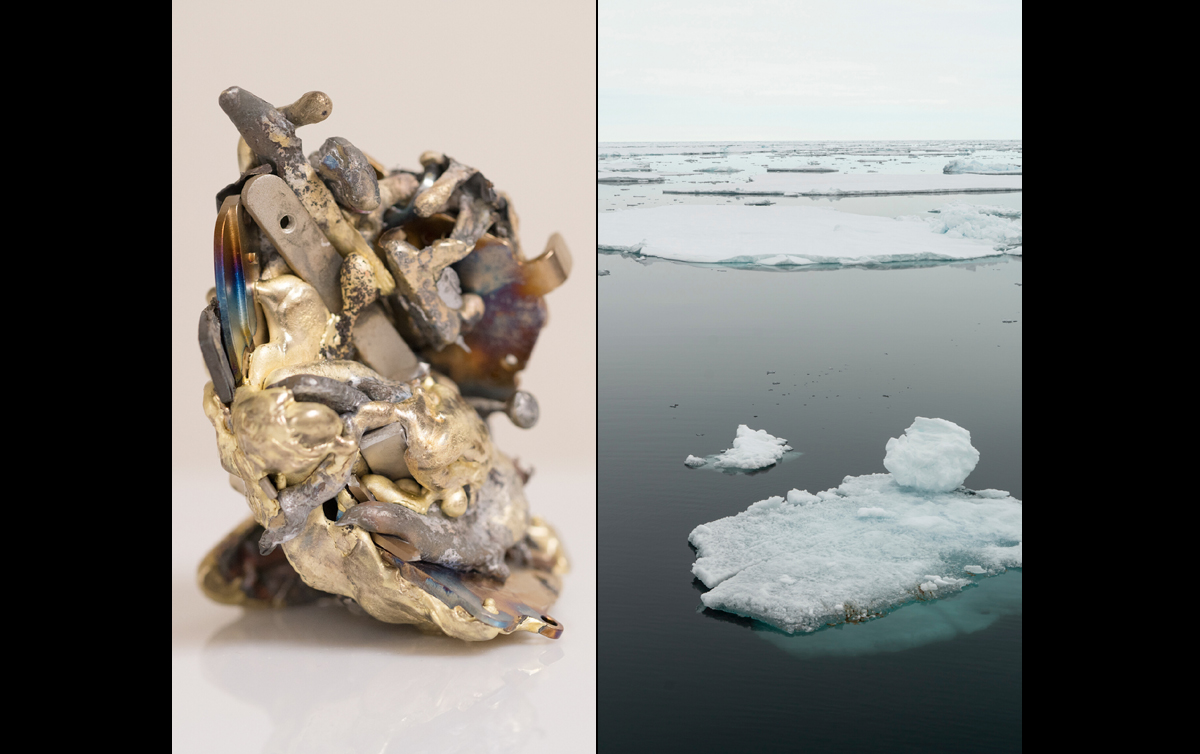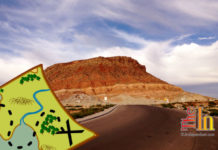
SUMA presents second iteration of Pete Froslie’s “Leviathan” exhibit
By Emily Ronquillo
Artist Pete Froslie returns to the Southern Utah Museum of Art to further develop the second iteration of “Leviathan: Elegy for Ice” and discuss his artistic practice during Art Insights Jan. 23 at 7 p.m. Attendees can expect to learn more about Froslie’s past work that led to his “Leviathan series,” which includes the current exhibition at SUMA. The artist will explain core themes found in this work, as well as discussing how these exhibition spaces are seen as experimental extensions of his studio practice. Froslie will also share his past experiences with artist residencies including The Arctic Circle, an artist and science-led expeditionary program. The exhibition will open the following day and remain on display through April 24.
Previously, visitors encountered Froslie’s digital works accompanied by hydrophone recordings of glacial ice. As he expands his “Leviathan series,” Froslie returns to using chemical processes to extract rare earth metals from electronic waste as he continues to answer the question: “How best can we see capital?” Since “Leviathan” is not a single, static work, past visitors of the exhibition should return to the museum to experience Froslie’s second iteration that incorporates additional media and technologies.
“For my first iteration of Leviathan, I created a computer-generated seascape in real-time using technologies that are more standard to the videogame industry. This content was derived from my recent residency in the Arctic,” said Froslie. “The second iteration will be a continuation of the computer-generated narrative. However, I will incorporate sending signals through objects in order to disrupt the storyline by using metals from my work, ‘The Aesthetics of Capital,’ that I began in 2016.”
In “Leviathan: Elegy for Ice,” Froslie engages themes of climate change, moral and political philosophy, philosophical aesthetics and demonology. His fascination with the relationship between global politics and economic structures includes the emerging issues of climate and environmental change, which he understands through the lens of the “Leviathan.” Froslie’s interest is grounded in both the Biblical Leviathan, the sea monster found in the Old Testament, and Thomas Hobbes’ book about social contract theory, “Leviathan,” published after the English Civil War in 1651.
Through several residencies in the Arctic to document fragile ecosystems and subarctic ecoregions, including his most recent experience traveling along the Svalbard archipelago of Norway, Froslie has collected digital assets that capture the pulse of the landscape. Using tech media such as electro-mechanical and game engine-based procedures, he integrates observations from his travels with his academic research. Froslie imagines that this continuous practice of traveling, researching, and making can summon a contemporary “Leviathan,” allowing the intersections between nature, society, and capital to be seen and felt.
“I am pleased to welcome Pete back to campus for the continuation of his ongoing Leviathan series because his work demonstrates how to blur the lines between art and technology,” said Jessica Farling, director and curator of SUMA. “Because of his experience with residencies and his unique approach to exhibition spaces, I felt that our campus and community audiences would benefit from his perspective through both his lecture and transformation of the museum’s newest exhibition space.”
More information about the exhibition can be found at suu.edu/suma. This exhibition is sponsored in part by the Sam and Diane Stewart Family Foundation. Admission to the museum is free and open to the public.
Articles related to “SUMA presents second iteration of Pete Froslie’s ‘Leviathan’ exhibit”
“Square One” exhibit showcases regional high school artists at SUMA



